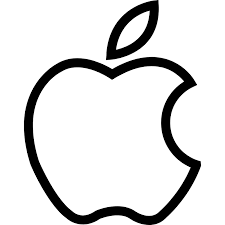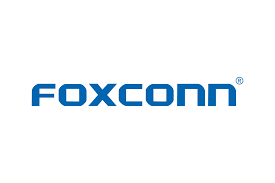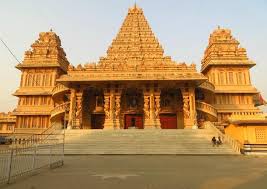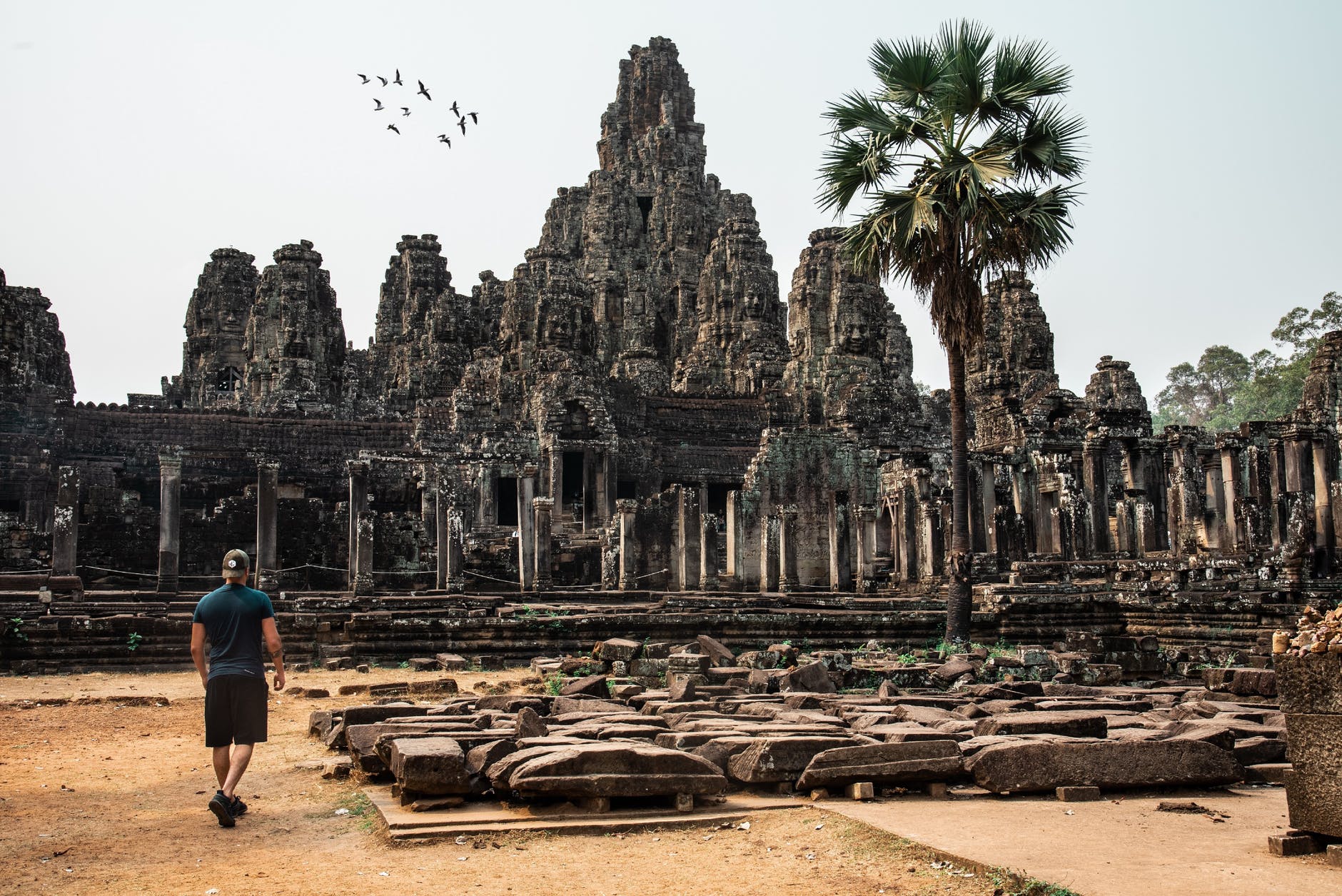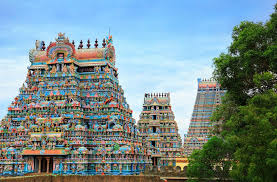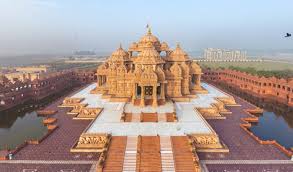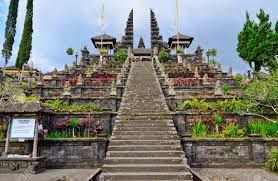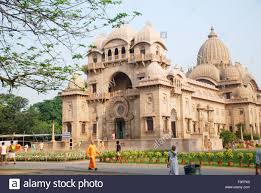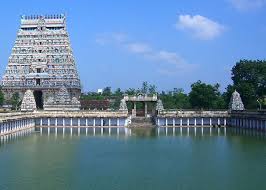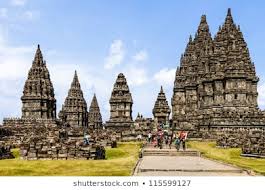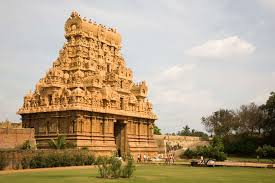Sport is an activity involving physical exertion and skill in which an individual or team competes against another or others for entertainment. Sports are part of every culture past and present, but each culture has its own definition of sports. The most useful definitions are those that clarify the relationship of sports to play, games, and contests. Sport is usually governed by a set of rules or customs, which serve to ensure fair competition, and allow consistent adjudication of the winner. Sport is generally recognized as system of activities which are based in physical athleticism. For popular sports, records of sports performance may be widely announced or reported in sport news. Sports kept societies fit and healthy while building strong communities and boosting morale. One of the best reasons for kids and adults to play sport is for the incredible health benefits. The sport tends to involve vigorous exercise, meaning you only need to aim for 75 minutes a week to get the benefits. If you achieve the recommended level of exercise, then the health benefits are undeniable. Benefits include: 50% decreased risk of diabetes, 35% decreased risk of heart disease, 50% reduced risk of colon cancer, 20% reduced risk of breast cancer, 30% lower risk of falling as an older adult, 30% lower risk of dying. Sports build friendship between pupils. Healthy kids are better learners.
1.Soccer/Football
It was estimated that there are 265 million people, who play the sport along with more than 5 million referees, which equates to 4% of the world’s population in over 200 countries. No one knows exactly when soccer was created, but the earliest versions of the game can be traced back 3,000 years. The earliest game that resembled association football in history is the Chinese game Cuju. The English Football Association was formed in 1863. Soccer is the most popular game in the world. The maximum number of players on a soccer team is 11. Soccer is played on a grassy field called a pitch. The field is rectangular and must be between 100 and 130 yards long and 50 to 100 yards wide. An international soccer game is 90 minutes long. The 90 minutes is divided in two 45 minute halves. In many countries it is known as “football”. Women’s soccer started to become extremely popular in the 1990s.
Today most of the balls are made from layers of synthetic leather while the bladders inside the ball are made from latex or butyl. In Europe during the Soccer balls were made from inflated pig bladders. The players will use any part of their bodies except their hands and arms, try to maneuver the ball into the opposing team’s goal. Only the goalkeeper is permitted to handle the ball and may do so only within the penalty area surrounding the goal. The team that scores more goals wins. Football made its television debut in 1937, featuring Arsenal in England. Sports commonly called football include association football; gridiron football ; Australian rules football; rugby football ; and Gaelic football. The players Andres Iniesta with 35 playing for Barcelona, Ryan Giggs with 34 playing for Manchester United and Lionel Messi with 34 playing for Barcelona have won the most trophies.
- Badminton
Badminton was introduced in the United States in the late 19th century and became a popular sport in the 1930s. Badminton was initially played with the players’ feet. The shuttlecock used in badminton gets its name from the back and forth motion in the game. This motion is similar to the shuttle of a loom. Since the projectile, with its sixteen feathers resembles a chicken, hence the ‘cock’ in shuttlecock. Badminton became an Olympic sport in 1992 at the Barcelona Olympics. The fastest racquet sport in the world is badminton, with shuttlecock speeds reaching more than 200 miles per hour. Badminton was originally not called badminton. It went by the name Shuttlecock and Battledore. It was eventually named badminton after the Badminton House in Gloucestershire, England. Badminton is a racquet sport played using racquets to hit a shuttlecock across a net. Points are scored by striking the shuttlecock with the racquet and landing it within the opposing side’s half of the court. The shuttlecock is a feathered or plastic projectile which flies differently from the balls used in many other sports. The game developed in British India from the earlier game of battledore and shuttlecock.
Badminton is an extremely popular indoor sport, which is played regularly by an estimated 220 million people around the world. This game requires quick reflexes and superb conditioning. This game has become very popular in Asia. Since 1992, badminton has been a Summer Olympic sport with four events: men’s singles, women’s singles, men’s doubles, and women’s doubles, with mixed doubles added four years later. England, Scotland, Wales, Canada, Denmark, France, Ireland, the Netherlands, and New Zealand were the founding members of the International Badminton Federation in 1934, now known as the Badminton World Federation. India joined as an affiliate in 1936. It is particularly popular in Asia. Feathers from the left wing of the goose make the best shuttlecocks. 16 feathers are used to make the shuttlecock and it weighs between 4.74 and 5.5 grams. Approximately 1.2 Americans play badminton approximately 25 times each year or more. The game has also become a popular backyard sport in the United States. 70% of all Badminton World Federation events are won by competitors from Indonesia and China. When badminton was first included in the Olympics in 1992, 1.1 billion people watched the badminton competition on television. The strings of badminton racquets are made from the stomach linings of cats.
3.Field Hockey
Outdoor game played by two opposing teams of 11 players each who use sticks curved at the striking end to hit a small, hard ball into their opponent’s goal. This fast-paced sport is played by men and women in over 100 countries on 5 continents around the world. A firm favorite at the Olympic Games, field hockey is a highly technical sport, played by 10 outfield players plus a goalkeeper and its rules differ from the Ice hockey variation of the sport. At the 2012 London Olympic Games, field hockey was the third most spectated sport. Pennsylvania has the highest number of field hockey players in the U.S.
Field hockey is known as simply “hockey” everywhere else in the world. It is called field hockey to distinguish it from the similar game played on ice. Players travel more than 5 miles during the course of a field hockey match. By 1928 hockey had become India’s national game, and in the Olympic Games that year the Indian team, competing for the first time, won the gold medal without conceding a goal in five matches. Indoor hockey, played by teams of six players with six interchanging substitutes, has become popular in Europe. Hockey players can only hit the ball with the flat side of their stick. A goal can only be scored either from a field goal, a penalty corner, or from a penalty stroke. A field goal is a goal scored from open play, and can only be scored from inside the ‘striking circle’, in front of the opponent’s goal.
4.Volleyball
Volleyball is a team sport in which two teams of six players are separated by a net. Each team tries to score points by grounding a ball on the other team’s court under organized rules. Volleyball began in the United States. William G. Morgan is credited with inventing the game in 9th February,1895 in Holyoke, Massachusetts. The first ball to be specially designed for volleyball was created in 1900. The first World Championships were held in 1949 for men and 1952 for women. He wanted to combine elements from baseball, handball, basketball and tennis. He wanted a game that was great exercise with less physical contact. Volleyball was first called “mintonette”. Originating from America, volleyball boasts an impressive estimated global participation figure of 998 million people. Volleyball were first introduced as Olympic sports in 1964. It took some of its characteristics from tennis and handball. The longest recorded volleyball game was in Kingston, North Carolina. It took 75 hours and 30 minutes. A volleyball court is 29 feet, 6 inches wide by 59 feet. The net is 7 feet, 11 5/8ths high for men. For women it is 7 feet, 4 1/8th inches high. The six positions on a volleyball team include the setter, server, blocker, spiker, passer, and the digger.
5.Basketball
James Naismith, who was worked as a physical education teacher invented basketball. For that first game of basketball in 1891, Naismith used as goals two half-bushel peach baskets, which gave the sport its name. The first backboards were made of wire. Basketball is a team sport established in 1898. Back when peach baskets were used as the hoop, every time someone scored, a referee had to fetch the ball by climbing a ladder. The basket’s steel rim has an 18 inch diameter. The backboard behind the net is 3.5 feet by 6 feet. The rim of the basket is 10 feet high from the court floor. Players advance the ball by bouncing it while walking or running or by passing it to a teammate, both of which require considerable skill. On offense, players may use a variety of shots, those are the lay-up, the jump shot, or a dunk; on defense, they may steal the ball from a dribbler, intercept passes, or block shots.
In 1936, basketball became an official game at the Olympics, which were held in Berlin, Germany. Even though basketball is widely known as an American sport, the first pro game was played in Toronto, Canada in 1946. A minimum of 450 million people play the sport around the world. Basketball grew steadily but slowly in popularity and importance in the United States. Kareem Abdul-Jabbar, who played 20 seasons in the NBA, holds the record for most points scored in a career with 38,387. On March 2, 1962, Philadelphia center Wilt Chamberlain scored 100 points in one game against New York. That is the most one player has ever scored in one game. The Naismith Memorial Basketball Hall of Fame is located in Springfield, Mass. Interest in the game deepened as a result of television exposure, but with the advent of cable television, especially during the 1980s, the game’s popularity exploded at all levels.
6.Tennis
Tennis dates back to 12th century France when it was played in the form of a handball game called ‘paume’ or palm. Tennis, original name lawn tennis, game in which two opposing players or pairs of players use tautly strung rackets to hit a ball of specified size, weight, and bounce over a net on a rectangular court. Points are awarded to a player or team whenever the opponent fails to correctly return the ball within the prescribed dimensions of the court. The game involved hitting a ball back and forth by hand. In time, a black leather glove was used and then from there a handle was added to the glove, which formed the first racquet. Original tennis balls were crafted from wood, it wasn’t until later that a cellulose material was used to make the balls bouncier. Today’s courts measure a standard 78 feet long, but in the early days courts were 90 yards long, with 45 yards per side. Each time a player scored, players moved 15-feet forward. The third point was scored with both players up at the net, and so the final point was made at 10 yards. word “Tennis” comes from the Anglo-Norman term “Tenez.” In 1971 the tiebreak was introduced in Wimbledon, it is only the mazor Tennis tournament still played on grass. The first Wimbledon was played in 1877. The winner’s trophy at Wimbledon remains on display at the All England Club’s museum as winners do not take their trophies with them. It is also the first of the four “Grand Slams” to be founded.
The term “Love” used in the scoring system of tennis is said to have originated from the French word for “egg,” l’oeuf, because a zero on a scoreboard resembles an egg. However, these claims are unsubstantiated. As per The International Tennis Federation, the weight of a tennis ball must be between 56.0 and 59.4 grams. The overall permissible length of a tennis racket is 29 inches. The sport is growing at serious speed in Asia. Every year 24 tons of Kent strawberries are ordered for the championship at Wimbledon. Widely recognised as the most popular individual sport in the world, tennis is played by an estimated number of 60 million men and women around the world. In the men’s game, Roger Federer has earned 20 Grand Slam singles titles while on the women’s side, Margaret Court has 24 singles majors. With 19 Grand Slam singles titles, Rafael Nadal stands second on the men’s list with the most singles Grand Slam titles. The first set of sisters to ever win Olympic gold medals in tennis were Venus and Serena Williams. Venus Williams served 205 km/hr. Ashe was the first African American to win the US Open. He won the tournament for the first and the only time in 1968. He said that “Start where you are. Use what you have. Do what you can.”
7.Cricket
The man considered as the father of cricket is William Gilbert (W.G.) Grace. The earliest reference to cricket is in South East England in the mid-16th century. The earliest definite reference to the sport is in a court case of 1598. Cricket is a bat-and-ball game played between two teams of eleven players on a field at the centre of which is a 22-yard (20-metre) pitch with a wicket at each end, each comprising two bails balanced on three stumps. The wickets are sets of three small, wooden posts that are at each end of a rectangle of short grass called ‘the pitch’. The pitch is inside a much larger oval of grass called the ‘area of play’. The area of play is a 30 yard circle inside the cricket ground or stadium. The cricket ball weighs 163 grams. Its core is made of cork which is wrapped with several layers of yarn. The outer casing is made of leather, which is then coated with lacquer. The batting side scores runs by striking the ball bowled at the wicket with the bat, while the bowling and fielding side tries to prevent this.
Forms of Cricket range from Twenty20, with each team batting for a single innings of 20 overs, to Test matches played over five days. It spread globally. The sport is followed primarily in the Indian subcontinent, Australasia, the United Kingdom, southern Africa and the West Indies and several other countries such as Afghanistan, Ireland, Kenya, Scotland, the Netherlands, and Zimbabwe.The majority of participants of this sport come from Australia, India, Pakistan, South Africa and the UK, but cricket is also on the rise in other countries all over the world. The International Cricket Council (ICC) identified that an impressive 125 countries around the world play the sport. It is enjoyed by more than 2.5 billion fans in 180 countries. Although there are 31 countries that play cricket in the international stage, only 12 have qualified for Test status. The biggest event in cricket is the World Cup, which is organized by the International Cricket Council (ICC). It was founded in 1909 as the Imperial Cricket Conference.
8.Table Tennis
Table Tennis was invented in the late 1980 s in England. Table tennis is a calorie cutter and a brain enhancer. Table tennis, also known as ping-pong and whiff-whaff, is a sport in which two or four players hit a lightweight ball back and forth across a table using small rackets. A point is scored when a player fails to return the ball within the rules. Spinning the ball alters its trajectory and limits an opponent’s options, giving the hitter a great advantage. It is governed by the worldwide organization International Table Tennis Federation (ITTF), founded in 1926.This indoor sport has become more and more popular over the years, with integration in schools, social clubs and sport centres across the world. Over 300 million players participate in various table tennis tournaments each year. It is very highly organized as a competitive sport. It has been an Olympic sport since 1988. The game is popular all over the world. In Europe and Asia, particularly in China and Japan, it is very highly organized as a competitive sport.
There are more than 1,600 varieties of table tennis rubbers on the authorized list. The international regulations state that the game’s sphere should have a mass of 2.7 grams. In 2008, the sport launched team events. Team events mean a one-sided team that comprises both men and women. Historians link Table Tennis to Victorian England. During the early ages, Great Britain was much interested in lawn events such as tennis. Later, they brought the sport indoors in the name of table tennis. This is everyone’s sport. It can be played for the entire life and has no biases towards gender, age, or disabilities. Also, it’s easier to master the art of the sport. The game is won when the player attains 11 points before the opponent. But when there’s a tie of 10 points, any player who leads by two points becomes the match-winner. The game involves lots of movement that facilitates the burning of fats.
9.Baseball
Baseball has been a part of American culture. Baseball had been invented by Abner Doubleday at Cooperstown, New York, in 1839. Henry Chadwick is known, among several others, as the “Father of Baseball.” Baseball was invented in the 1800s with the Knickerbocker Rules. Baseball, game played with a bat, a ball, and gloves between two teams of nine players each on a field with four white bases laid out in a diamond. Teams alternate positions as batters (offense) and fielders (defense), exchanging places when three members of the batting team are “put out.” As batters, players try to hit the ball for a run. The team that scores the most runs in nine innings wins the game. The objective of the defensive team (fielding team) is to prevent batters from becoming runners, and to prevent runners’ advance around the bases. In the United States and Canada, professional Major League Baseball (MLB) teams are divided into the National League (NL) and American League (AL), each with three divisions: East, West, and Central.
Baseball used to be a full medal sport in the Olympics in 1992. Historically baseball was more popular in America than anywhere else in the world but the sport is now becoming increasingly popular in other countries such as Japan. Softball is the female version of the game, and it is estimated by the World Baseball Softball Confederation (WBSC) that 65 million people play either baseball or softball in over 140 countries. This game usually lasts 3 hours long. Baseball initially started in the U.S., it has spread worldwide. Japan has the largest pro baseball league outside the U.S. The baseball team with the most World Series wins is the New York Yankees with 27 titles. The first pro baseball game ever to be aired on television was on August 26, 1939. It was a doubleheader between Brooklyn and Cincinnati. 65 million people play either baseball or softball in over 140 countries. During a typical game, approximately 70 balls are used.
10.Golf
Perhaps one of the most popular pastimes in the world, according to Golf Today, 60 million people around the world regularly participate in the sport. Golf is a club-and-ball sport in which players use various clubs to hit balls into a series of holes on a course in as few strokes as possible. Golf can be traced back millennia to China, but the modern, 18-hole version started in Scotland in the 1400’s. Each hole on the course must contain a teeing ground to start from, and a putting green containing the actual hole or cup 4 1⁄4 inches (11 cm) in diameter. Until the 17th century Golf Balls Were Originally Made of Wood. An alternative type of golf ball, known as a feather ball.
A feather was basically a leather pouch filled with chicken or goose feathers. The first round of women’s golf was played in the year 1811 in Musselburgh, Scotland. Before golf tees, players would shape mounds of sand and place the golf ball on top.Golf is one of the two only sports to be played on the moon. On February 6, 1967 Alan Bartlett “Al” Shepard, Jr. performed a one-handed swing with a six-iron, sending the ball flying through the moon’s low-gravity atmosphere. And in case you were wondering, javelin is the other sport that was reportedly played on the moon. Golf is an excellent workout that burns calories while promoting greater muscle mass. Tees were finally popularized in the 1920s. The longest putt was a mind blowing 375 feet. Early forms of golf were played in the Netherlands first and then in Scotland.


